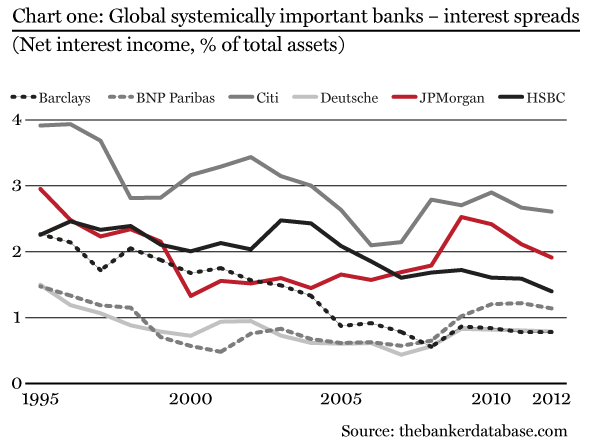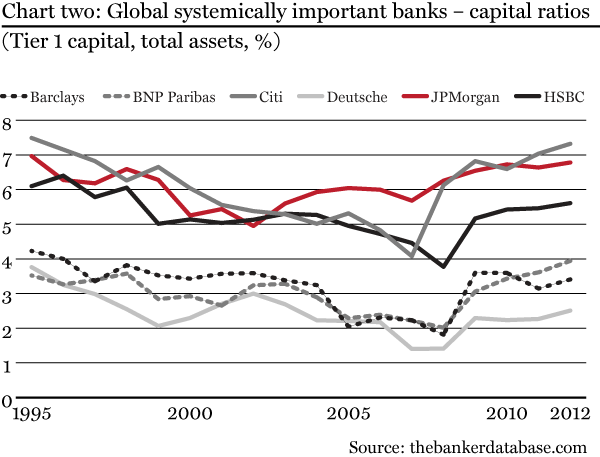The Bank for International Settlements suggests there is evidence that higher capital requirements for systemically important banks have led to higher interest rates on their lending to bolster return on equity. But interest spreads are still far lower than a decade ago.
In its quarterly review published in September 2013, the Bank for International Settlements (BIS) asked how banks have responded to higher capital requirements imposed since the financial crisis began in 2008. Bankers had warned that higher capital requirements would push up the cost of the funds they loan to their customers, as the banks struggle to make a decent return on capital in a world of much higher capital levels. The report focuses in particular on the so-called global systemically important banks (G-SIBs) that face some of the toughest new capital requirements.
“One of the predictions about the impact of the transition to higher bank capital ratios – that it would lead to wider lending spreads – appears to be confirmed,” the report concluded.
However, this conclusion was based on two discreet observation periods, comparing the years 2005 to 2007 with the years 2010 to 2012. Yet, 2005 to 2007 marked the peak of the global credit bubble, when excess liquidity and extreme competition among global banks drove spreads to unsustainably low levels, mispricing the vast credit risk that was created.
The Banker has looked at its data, which spans a period of almost 20 years, to establish a more measured assessment. We use the same measure as the BIS – net interest income as a percentage of total assets. And we have selected the six G-SIBs that are in the top two BIS buckets for systemic importance, carrying the highest capital requirements.
From this data (see chart one), there is a clear long-term trend toward lower bank lending spreads. It is too early to say whether the past three years represent a decisive turn in that trend. All six G-SIBs had lower interest spreads at the end of 2012 than in the first year of our observation period, 1995. And all except JPMorgan and BNP Paribas had lower spreads in 2012 than a decade earlier.
However, this does not mean that interest spreads and capital requirements are uncorrelated. In fact, even the idea that bank capital is rising needs to be qualified. While capital ratios have risen sharply since 2008, they too have been in a long-term down trend. Only BNP Paribas had a higher ratio of Tier 1 capital to total assets at the end of 2012 than in 1995 (see chart two).
One striking difference is between US and European banks. The US banks appear to have consistently higher capital-to-assets ratios, and higher interest spreads. But in both cases, this is partly the result of differences in balance sheet accounting. US accounting principles allow the banks to net their derivatives positions, whereas European rules require derivatives to be reported on a gross basis. This substantially reduces the size of total assets reported by US banks, potentially flattering their interest income and capital ratios.




